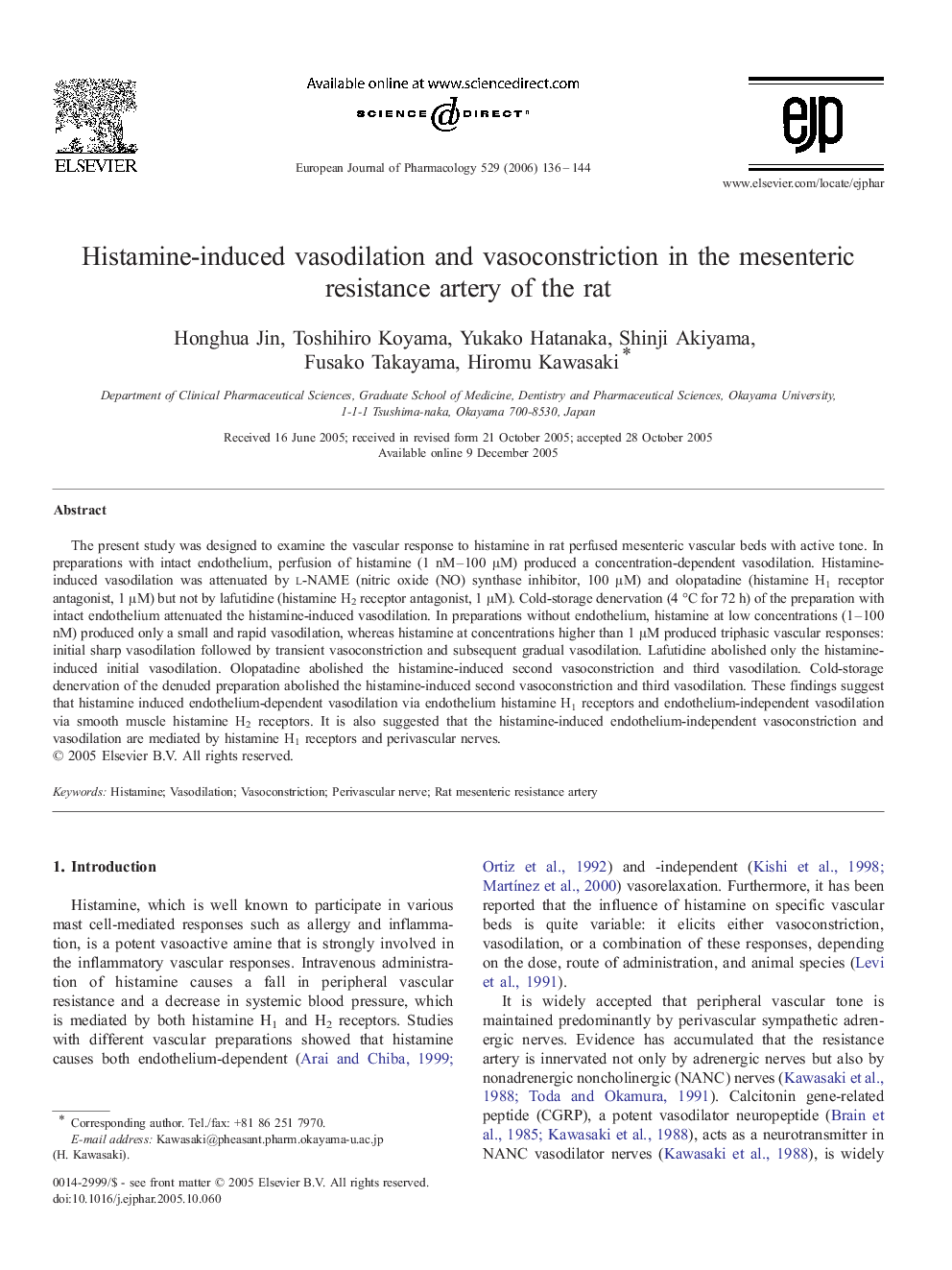| Article ID | Journal | Published Year | Pages | File Type |
|---|---|---|---|---|
| 2537593 | European Journal of Pharmacology | 2006 | 9 Pages |
The present study was designed to examine the vascular response to histamine in rat perfused mesenteric vascular beds with active tone. In preparations with intact endothelium, perfusion of histamine (1 nM–100 μM) produced a concentration-dependent vasodilation. Histamine-induced vasodilation was attenuated by l-NAME (nitric oxide (NO) synthase inhibitor, 100 μM) and olopatadine (histamine H1 receptor antagonist, 1 μM) but not by lafutidine (histamine H2 receptor antagonist, 1 μM). Cold-storage denervation (4 °C for 72 h) of the preparation with intact endothelium attenuated the histamine-induced vasodilation. In preparations without endothelium, histamine at low concentrations (1–100 nM) produced only a small and rapid vasodilation, whereas histamine at concentrations higher than 1 μM produced triphasic vascular responses: initial sharp vasodilation followed by transient vasoconstriction and subsequent gradual vasodilation. Lafutidine abolished only the histamine-induced initial vasodilation. Olopatadine abolished the histamine-induced second vasoconstriction and third vasodilation. Cold-storage denervation of the denuded preparation abolished the histamine-induced second vasoconstriction and third vasodilation. These findings suggest that histamine induced endothelium-dependent vasodilation via endothelium histamine H1 receptors and endothelium-independent vasodilation via smooth muscle histamine H2 receptors. It is also suggested that the histamine-induced endothelium-independent vasoconstriction and vasodilation are mediated by histamine H1 receptors and perivascular nerves.
